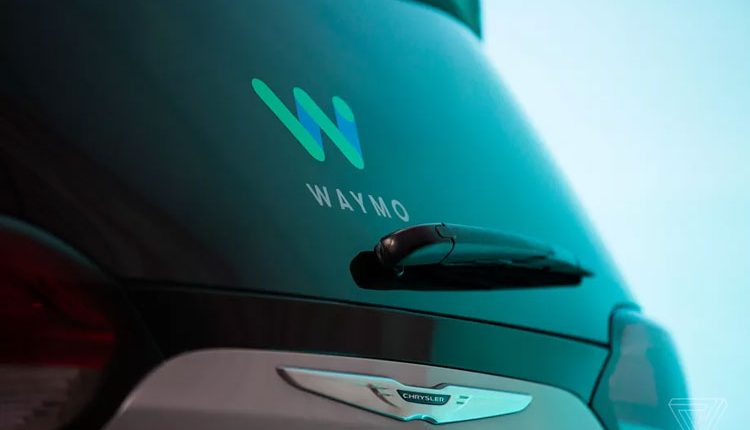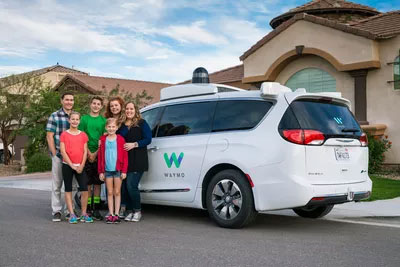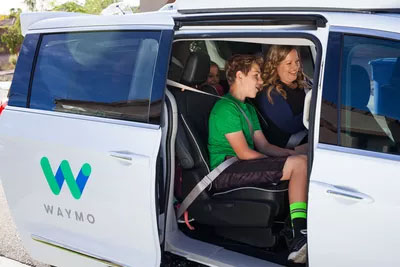Getting a free ride in Waymo’s self-driving minivans
Residents of the greater Phoenix metropolitan area can sign up to go for a ride in a self-driving minivan. As often as they want. For free.
Waymo, the self-driving car startup spun off from Google late last year, has announced that it’s offering its services to members of the public for the first time. Waymo is calling it an “early rider program,” intent on cataloging how on-demand, driverless cars will factor into people’s everyday lives. Interested participants can sign up on the company’s website, and Waymo will select riders depending on the the types of trips they want to take and their willingness to use the self-driving service as their primary mode of transportation.
A Waymo test driver will be behind the wheel at all times, but the company insists that the vehicle will drive without human intervention as much as possible. Rides will only be available to residents of Phoenix and the surrounding towns, like Gilbert, Tempe, and Chandler. Waymo describes the service areas as twice the size of San Francisco.
In order to accommodate what it hopes will be “hundreds” of riders, Waymo is ordering an additional 500 Chrysler Pacifica minivans from its automaker partner, Fiat Chrysler, which it will then outfit with the laser sensors it manufactures in-house. Waymo already has 100 self-driving minivans that have been driving the streets of Phoenix and Mountain View, California, since earlier this year.
“We want as many people as possible to experience our technology, and we want to bring self-driving cars to more communities sooner,” said John Krafcik, CEO of Waymo, in a Medium post.
This is a major milestone for Google’s parent company, which has been operating self-driving cars on public roads for years without allowing real people to experience the technology first-hand. Its competitors, meanwhile, have been less hesitant. Uber started inviting riders to hail its autonomous cars in Pittsburgh last September, and has since launched an additional limited experiment in Tempe, Arizona.
But Uber’s self-driving experiment has been fraught with missteps. A self-driving Uber was involved in an accident a few weeks ago, resulting in the vehicle tipping over on its side. Waymo is now suing Uber, accusing the ride-hail company of stealing some of its self-driving secrets. Uber’s response to the lawsuit basically amounted to a long admission that Google’s technology is far superior to its own.
Waymo has actually been providing trips to “a handful” of people (contacts of Waymo employees, a spokesperson said) for several months now. Happy with the results, the company decided to open its doors to a wider selection of residents.
In his Medium post, Krafcik highlights one Arizona family — Ted, Candace, and their four kids — while the company provided glossy photos and b-roll of the smiling family participating part in Waymo’s radical experiment.
Why radical? Arizona doesn’t regulate self-driving vehicles as closely as other states like California. As such, Waymo isn’t required to obtain a license or submit any information to regulators regarding its decision to start allowing regular people into its driverless vehicles. A spokesperson for the Arizona Department of Transportation was not immediately available for comment.
Even so, Waymo says it has the tacit approval from the city of Phoenix and the surrounding communities. It’s not hard to believe: after Uber’s self-driving experiment got shut down in San Francisco late last year, the ride-hail company absconded to Arizona, where it was welcomed with open arms by Governor Doug Ducey. The Republican politician was quick to endorse Waymo’s new program too.
“Arizona is proud to be leading the nation as a home for innovation and technology,” Ducey said, in a statement provided by Waymo. “This latest phase of Waymo’s testing will provide new transportation options for Arizonans who participate, and help pave the way for the expansion of this technology.”
Like Uber’s offering, Waymo’s self-driving service will be limited at first. Approved riders will be able to hail a minivan using a Waymo app (a spokesperson declined to share a screenshot or any details about how the app will work). The rides will be free and participants will be asked to share details about when and how they use the service.
“We’ll learn things like where people want to go in a self-driving car, how they communicate with our vehicles, and what information and controls they want to see inside,” Krafcik said.




Comments are closed, but trackbacks and pingbacks are open.